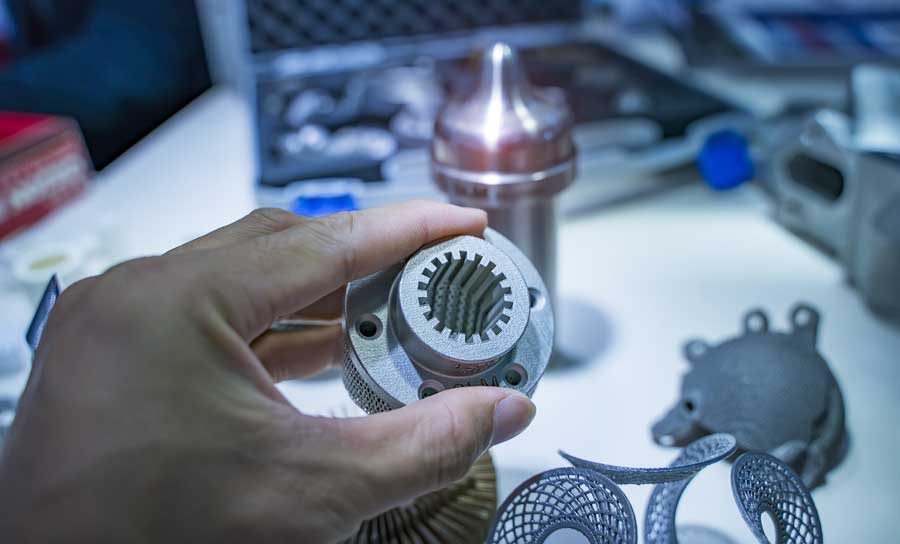ERP and Digital Twins: The Key to Agile Manufacturing
In a rapidly changing industrial landscape, companies face major challenges: accelerating production, reducing costs, personalizing offerings, and ensuring supply chain resilience. To meet these demands, ERP software integration combined with digital twins has emerged as a decisive breakthrough. This technological combination not only optimizes industrial processes but also makes production more agile and competitive. Discover how ERP and digital twins, at the core of innovative solutions like GhostMatter, are revolutionizing industrial management.

1. Understanding ERP and Digital Twin Integration
1.1 What Is a Digital Twin in the Industrial Context?
A digital twin is a faithful virtual replica of a physical object, piece of equipment, or industrial process. This digital model evolves in real time thanks to data collected from sensors, IT systems, and machine interfaces. Digital twins enable:
- Simulation and prediction of industrial equipment behavior
- Continuous monitoring of asset condition and performance
- Optimization of maintenance, production, and quality
In the industrial sector, digital twins are becoming a strategic tool to anticipate failures, reduce unplanned downtime, and improve part and process traceability.
1.2 ERP: The Core of Industrial Operations
ERP (Enterprise Resource Planning) centralizes and coordinates all operational flows of the company: procurement, production, inventory, logistics, HR, finance, and more. As the digital backbone, ERP ensures data consistency and reliability while enabling better decision-making. However, its potential is greatly enhanced when combined with advanced technologies like digital twins, which enrich ERP with real-time data and predictive insights.
- Centralized data on a single platform
- Automation of business processes
- Increased visibility across all operations
1.3 Why Combine ERP and Digital Twins?
ERP integration with digital twins offers multiple benefits for manufacturers:
- Complete traceability: Precise tracking of every part, batch, or asset throughout its lifecycle.
- Real-time analytics: Instant access to production and maintenance data for continuous optimization.
- Faster decision-making: Scenario visualization, rapid identification of deviations, and immediate corrective action.
- Interoperability: Smooth communication with other systems (PLM, MES, IoT) for digital continuity.
This synergy aligns operational management with real-world conditions while ensuring greater responsiveness to disruptions.
2. The Benefits of Agile Production with ERP and Digital Twins
2.1 Shorter Lead Times and Improved Time-to-Market
Integrating digital twins with ERP makes it possible to simulate and optimize every stage of the industrial process before production even begins. Through on-demand manufacturing and digital spare parts management (formats STL, 3MF, STEP), production cycles are shortened, testing and validation phases accelerated, and time-to-market significantly reduced.
- Simulating production lines to anticipate bottlenecks
- Automating work orders based on real demand
- Reducing new product launch times
Example: An aerospace parts manufacturer cut product validation time by 60% by integrating 3D models directly into its ERP via GhostMatter, enabling immediate adaptation to customer specifications and seamless production.
2.2 Operational Cost Optimization
One of the biggest advantages of ERP–digital twin integration lies in cost reduction:
- Eliminating physical stock: Parts are stored digitally and produced on demand, avoiding storage and obsolescence costs.
- Better resource allocation: Cross-analysis of ERP and digital twin data optimizes use of machines, materials, and labor.
- Lower unnecessary expenses: Predictive maintenance and real-time monitoring reduce emergency repairs and unplanned downtime.
Industry benchmarks show that digital spare parts and on-demand production can achieve up to –81% TCO and –75% shorter lead times for MRO chains and small-series production.
Case study: An automotive supplier freed up warehouse space and saved €350,000 annually by moving from physical stock to digital inventory integrated into its ERP, while ensuring instant part availability.
2.3 Supply Chain Resilience and Flexibility
In today’s volatile logistics environment, the ability to quickly adapt production and supply chains is crucial. ERP enriched with digital twins provides real-time visibility across the entire supply chain:
- Immediate identification of shortages and bottlenecks
- Simulation of alternative scenarios in case of crises or shortages
- Localized production at the nearest compliant sites (cloud manufacturing)
The combination of ERP and digital twins ensures operational continuity and strengthens industrial resilience against global market disruptions.
Example: During the semiconductor crisis, an electronics manufacturer leveraged ERP–digital twin integration to reassign orders in real time to alternative production sites, maintaining a service rate above 98%.
3. How to Ensure Successful Integration
3.1 Identify Your Industry-Specific Needs
Each industrial sector has unique requirements and constraints. To succeed with ERP–digital twin integration, companies must:
- Analyze business processes and pain points
- Define key objectives (cost reduction, quality improvement, agility…)
- Map data flows and necessary interfaces (PLM, MES, IoT…)
- Involve key stakeholders from the outset
This audit phase builds a roadmap aligned with your industrial challenges.
3.2 Choose a Modular and Scalable Solution
ERP–digital twin integration should be built on a robust, open, and scalable platform. Modular solutions like GhostMatter provide:
- A progressive rollout (digital archiving first, then traceability, real-time QA, ERP/PLM integration…)
- Standardized connectors for seamless interoperability with existing systems
- Secure architecture hosted in France, ensuring industrial data sovereignty
- Flexible subscription models adapted to SME and mid-cap growth
This modular approach allows rapid deployment of high-value features without disrupting operations.
Example: A medical SME began by archiving its 3D files, then gradually activated traceability and on-demand production via its ERP, without interrupting activity.
3.3 Drive Adoption Through Training and Support
Success relies on people. It is essential to:
- Engage operational teams from the project’s early stages
- Train users to leverage digital twins and ERP-derived insights
- Provide tailored support to maximize adoption of new practices
- Gather regular feedback to continuously improve integration
A structured training program and transparent communication are key to securing buy-in and building user expertise.

4. GhostMatter: Next-Generation ERP Integration
GhostMatter delivers a unique approach to ERP–digital twin integration, designed to meet the needs of modern manufacturers:
- Secure digital storage: Archive all technical files (STL, 3MF, STEP) on redundant French servers (SSL A+)
- On-demand production: Automatic triggering at the nearest compliant site, cutting Scope 3 and lead times
- Modularity: Start simple with “Store,” then expand to “Activate,” “Integrate” (ERP/PLM connectors), and “Monetize” (marketplace)
- Multi-material compatibility: Plastics, resins, metals, and ceramics
- Sovereignty and security: Encrypted data, GDPR compliance, hosting in France
Benefits for your teams:
- Reduced total cost of ownership (TCO) and delivery times
- Improved traceability and product quality
- Faster time-to-market and greater innovation capacity
- Demonstrable contribution to ESG and CSRD objectives
By choosing GhostMatter, you gain a scalable, secure platform designed to integrate seamlessly with your existing ERP environment.
Conclusion
Combining digital twins with your ERP is now an essential lever for achieving agility, reducing costs, and meeting rising demands for industrial personalization. With a solution like GhostMatter, you accelerate production digitalization, secure your data, and strengthen operational performance.
- Optimize your supply chain with real-time visibility
- Cut storage and maintenance costs
- Adopt a scalable solution compatible with your ERP
- Enhance your company’s resilience to market disruptions
Don’t let competitors get ahead: contact GhostMatter’s experts today to discover how we can support your digital transformation and optimize your industrial operations!




